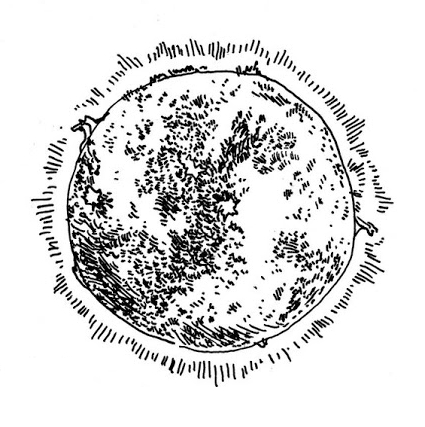Once the shock of the existence of the Loch Ness Monster wears off, there follows even more horrifying news: Nessie has been murdered! Such is the situation that Lydnsey Grockle finds herself in.
Abandoned by her colleagues, recovering from a breakup with a conspiracy-obsessed ex, she finds herself neglected by her “low-maintenance” cosplaying guests (as far as she knows) while fighting the depression that comes from wanting to be useful while being completely redundant. Press ganged into the role of a reluctant detective, she has a weekend to determine who killed Nessie before all the convention attendees, all the cryptozoological and mythological creatures of the world here to party, are forced to go home–with tremendous consequences if the matter is left to fester.
Seems the monster community is divided by how much they want to remain hidden, and the dynamic created by ‘trendy’ monsters, nouveau riche creepypasta newcomers, and traditional characters from folklore. Nessie being dead alters the balance of power between the competing cliques. Lyndsay not only has to manage colossal egos and oversized personalities (and bodies), but also the ramifications of one of the monster world’s most powerful entities dying on her watch. The question is who did it, which, given that the hotel is inhabited by monsters across both the world and cultures, is a tricky endeavour.

Who Killed Nessie is the forthcoming graphic novel (to be published in September 2025) by Paul Cornell and Rachel Smith. Both of them are veterans of Doctor Who, with Cornell’s biggest contribution to comics being the comics series Saucer Country (which also deals with paranormal phenomena and the theories that spin out of it).
Desperate for acceptance and belonging, Lyndsay gets out the red string and corkboard to correlate the evidence she gathers. The mystery of the story is similar to the same logic that certain…creative types online try to make sense of the world. The story investigates why cryptozoological creatures are so difficult (or reluctant) to be discovered, chafing with those who enjoy tantalizing humanity just a little. Part of the fun of being a monster is living in the netherspace between fiction and fiction, truth and legend. When you verify a monster’s existence, it just becomes part of the world. Who wants that?

The solution to the story is to acknowledge that reason is just part of our ability to make sense of the world. We don’t pay much heed to our emotional responses and thinking, but when it comes to determining truth and lies, it’s underrated. The story requires that Lyndsay suspend what we know to be certain and open her mind to find the killer.
Smith’s art style is cartoony, not obnoxiously so, striking the balance that the nature of the story requires. It isn’t juvenile, but neither does it take itself too seriously. Lydnsey is a relatable protagonist, in the stage of her life when old failures are the foundation for the strides into confident adulthood. We’ve all been at the stage in our lives in which adult responsibilities are dropped into our laps and we need to make the best of it. The story is a familiar arc of dorky young adult blossoming from insecurity to self-confidence. Adults will certainly enjoy it, and I imagine it will find a home with readers who have started off with Raina Telgemeier and are branching into more mature titles.

We are living in a world, for better and very much for worse, obsessed with conspiracy theories. Believing in Nessie, Bigfoot, or the Chupacabra may be benign, but, distressingly, people in very powerful offices are shaping our lives based on whatever half-truths or whole lies they hold close to their hearts. Additionally, we are also debating as to what or who constitutes “real” or “fake.” This gives Who Killed Nessie another level of resonance, which the creators may or may not have intended. All in all, Who Killed Nessie is an enjoyable read. Whether it’s a kid hoping to enjoy a spirited romp with their favourite monsters or an adult wanting to see the problems of the world projected as harmless fantasy, I recommend it for a reader seeking interest in an enjoyable read. If only the monsters stalking our world were as harmless as the ones in the comics.
SOLRAD is made possible by the generous donations of readers like you. Support our Patreon campaign, or make a tax-deductible donation to our publisher, Fieldmouse Press, today.

Leave a Reply